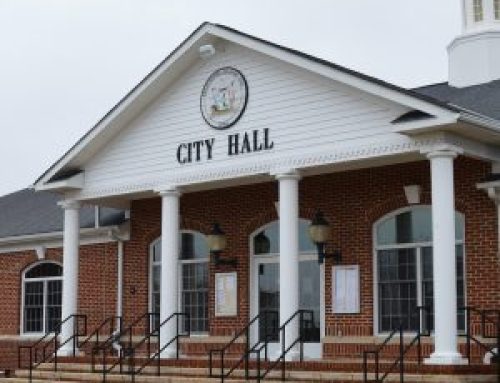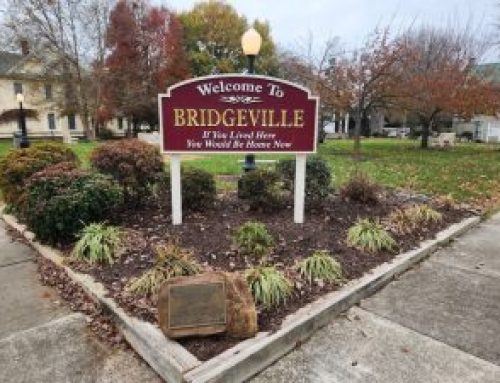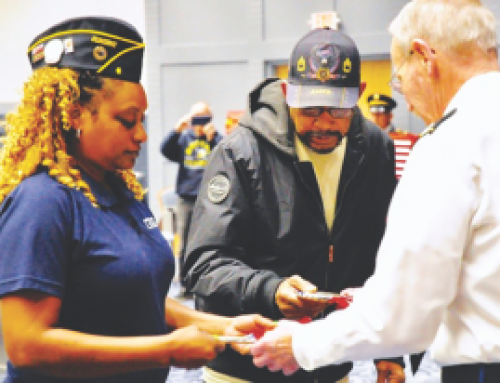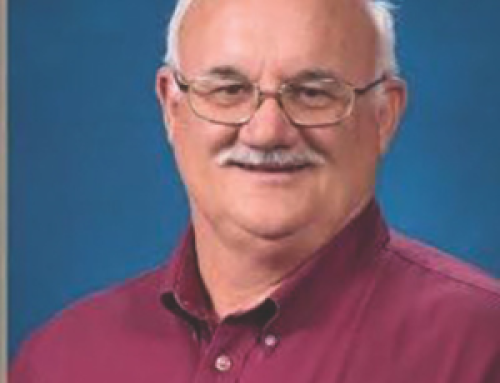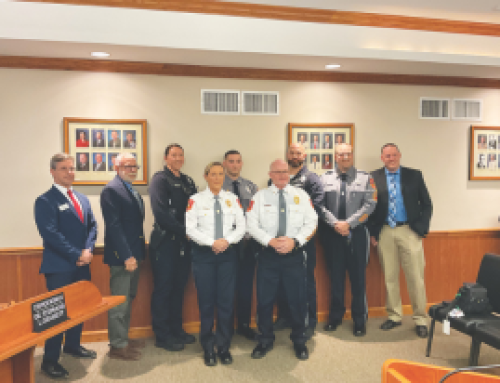If you are on public water supply from the town of Blades, “you have clean water,” was the assurance from Daniel Taylor, an EPA representative conducting a public meeting on March 22 regarding the Blades Groundwater Superfund Site. The filters on the town wells “are doing what they are supposed to do,” Taylor added.
First, some background information: Testing of the three wells that produce the town’s water was done by the state Department of Natural Resources and Environmental Control in 2018 in coordination with the EPA because of their proximity to potential sources of perfluorinated compounds (PFCs) from historical industrial processes in the area. Sampling for PFCs had not been done previously because these chemicals are not regulated under the Safe Drinking Water Act.

Using heavy-duty equipment, EPA workers prepare a water monitoring well to keep tabs on changing groundwater conditions in a Superfund site. Photo courtesy Daniel Taylor, EPA
The testing discovered contaminants known as PFAS, a group of manufactured chemicals that have been used in industry and consumer products since the 1940s. The long-term effect of these chemicals is still being studied. Bottled water was provided to town residents until the first granular activated carbon filtration system was installed. A second filter is also now in operation.
The March 22 meeting was arranged by the EPA as an opportunity for community members to speak directly to the EPA site team, including Taylor, who is project manager. Details were provided in advance of the meeting at www.epa.gov/superfund/bladesgroundwater. In addition to about 20 people who attended in person, about a dozen participated in the meeting electronically.
Taylor gave a brief update about what has been done at the Superfund site and discussed the next steps for cleanup. The last public meeting on this project was three years ago, pre-COVID. “We want to have more meetings in the future,” Taylor said. “It is important to have constant, clear communication with the community.”
The Blades Groundwater Superfund Site is approximately a mile in diameter from the Blades’ wells, in an area bounded by the Nanticoke River and Morgan Branch.
Historically, there were two companies in Blades whose manufacturing processes used PFCs. One, Procino Enterprises, is still active. The other, Peninsula Plating, operated in the 1980s and ‘90s. That operation closed in 1995.
In addition to providing filters for the town’s wells, EPA sampled wells outside of Blades and provided treatment units for certain homes as another layer of protectiveness, Taylor said.
Since then, the site has been listed on the National Priorities Site Listing, which makes it eligible for long-term remedial investigation and remedial action (cleanup) financed under the federal Superfund program.
There is a specified “Superfund Remedial Process.” This site is now in the “characterization” phase, Taylor explained. Remedial investigation has begun, which involves defining the nature and extent of the contamination. Questions to be answered are: “Where is the contamination coming from (the source area)? Where is the groundwater going? How far will it migrate? How does the soil influence groundwater flow? What substances are in the water?”
Groundwater in this area migrates to the south and southwest, Taylor said. When it flows through contaminated areas, it picks up contamination. The EPA is installing monitoring wells to learn about soil and groundwater conditions.
A soil profile is determined by extracting a core sample (as is seen in the TV series, “The Curse of Oak Island.”) Showing slides of the equipment and a cut-open core sample, Taylor said the top layer is sandy, allowing water to flow through. The bottom layer is a thicker clay material. “When the water hits clay, it has a hard time getting through.” This sampling helps them determine how deep a test well should be installed. A variety of wells have been installed around town — at least 35, according to one of the slides.
Periodically, EPA workers collect water from the monitoring wells to see if groundwater conditions are changing.
“Another part of the remedial investigation is to test private wells. EPA’s mission is to protect human health and the environment,” Taylor said. Testing has been done in 60 homes, particularly along River Road, on the other side of the railroad tracks, and down Market Street outside of the town of Blades.
Based on well sampling, the EPA is allowed to do removal action, which Taylor described as addressing the “now” situation. “EPA doesn’t just address the ‘now,’ but also the potential future aspect of things.”
The team addresses that potential and develops ways and alternatives to deal with the problem. A remedy is selected and a proposed plan goes out for comment on the preferred cleanup option, Taylor continued. The 30-day comment period provides the community time for input on that option. “We take all the input and select the remedy,” he said.
One potential option might be to extend the town’s water line down River Road. Taylor expects a plan may be ready this summer. “We’ll have another meeting then,” he said.
It might take six months after the close of the comment period to issue a choice. The process then calls for designs, access… It might take two more years before anything is done. The EPA’s Superfund would pay for the work, whatever is decided.
“While developing the plan, we will continue to define the nature and extent of contamination,” Taylor said. “That involves sampling wells, more wells, soil samples from source areas, sampling surface water… Cleaning up groundwater takes time.”
After polling meeting participants, Taylor said future communication to residents would include the Seaford Star newspaper. Taylor can be reached in Philadelphia at 215-814-3326 or by email at ta***********@*pa.gov.

